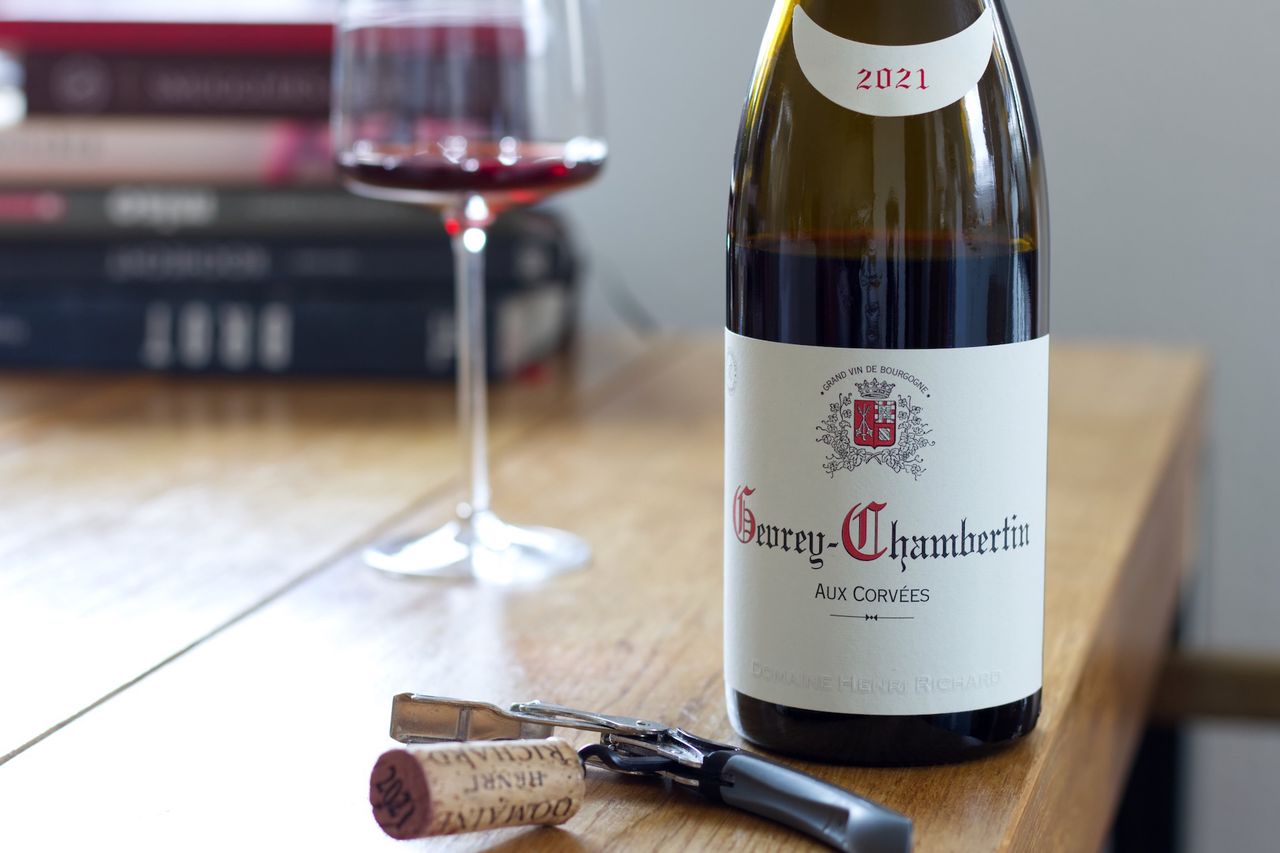Henri Richard - Aux Corvées 2021
We are drinking a bottle of Pinot Noir Aux Corvées 2021 from Gevrey-Chambertin by Henri Richard.

Almost only typography on a lot of white background, I dig that. I like it with Wasenhaus, I like it with Domaine Lassak, and with this bottle too, the look definitely played a role in my purchase decision. An even bigger part was probably the discount of over a third in the clearance sale. You’ll never get the Swabian out of me, and that’s a good thing. The remaining factor is that the bottle just looks like a great Burgundy, and it says Gevrey-Chambertin on it. But in Burgundy, that doesn’t necessarily mean much, there’s arguably nowhere else where it’s so easy to spend a lot of money for not that much wine. And, to be fair, this wine is also at the entry level within the domaine’s remaining price structure. That’s Burgundy for you, and I’m perfectly fine with reaching my limit at this price point.
The estate was founded in the late 1930s by Jean Richard. The name of his son Henri has remained on the labels ever since, with the first bottlings being filled in the 1970s. The conversion to organic took place in 2005, to biodynamics in 2018. After Henri Richard, his daughter Margaret took over with her son-in-law Jean Bastien. Since 2013, in the fourth generation, the siblings Richard Bastien and Sarah Bastien-Berthier have been responsible for the domaine’s destiny. I don’t even want to know how often Richard gets called by his last name as if it’s his first, and vice versa, because after all, Richard is on the bottle. There’s also the oenologist Guillaume Berthier on board. The estate is still based in Gevrey-Chambertin on the Côte de Nuits today. Aux Corvées lies directly east of the village and west of the estate. The grapes are fermented spontaneously with about half whole bunches and then aged for about a year in barrique.
The first moments offer basically only cherry on the nose. It takes about half an hour for this to change, and for the aroma to gradually gain more depth. Then come old books, a bit of leather, herbs, cherry pit cushion, vanilla, and violets. The cherries now seem more like syrup than fresh fruit. With oxygen, the wine becomes denser and more complex. The tannins are velvety soft, covering the whole tongue, the palate, and practically everywhere else. Only on the edges of the tongue can you sense the acidity, trying to break through fruit and tannin. This is one of those Pinots that lives on harmony and depth rather than austere minerality and tension. The cherry is just as beautiful on the palate as on the nose, lingers as long as the tannin on the tongue, and towards the very end becomes more pit than flesh. It’s so unpretentious and effortless that you have to be careful not to drink the wine in big gulps like cherry juice, which I don’t actually like that much, as it’s often too sweet for me. That’s not a problem here.
On day two, an earthy note joins everything that was already present on the first evening and completes the Pinot experience. Overnight, the wine has become more robust, less caressing, less supple. But it makes up for the lost harmony with additional tension and acidity. There’s more power now, more edge, even more density. There’s stone fruit in liqueur form, something ethereal, and more acidity. It feels leaner now, juicier, more robust. The tannin remains approachable, not at all gripping even now in the evening. Actually, this kind of evolution often goes the other way around, the first night usually has the tension, the second night the harmony. Here, it’s reversed. That doesn’t bother me, it simply demands more attention now. The leather is gone, so are the old books, replaced by herbal ethereality, more scentiness, more of a suggestion of fruit than actual cherry. Same wine, but a different wine. Where it will go in the next few years in terms of development, I won’t be able to find out. That’s the usual fate of a single bottle. But that doesn’t bother me either. These two evenings with this bottle were simply too good.